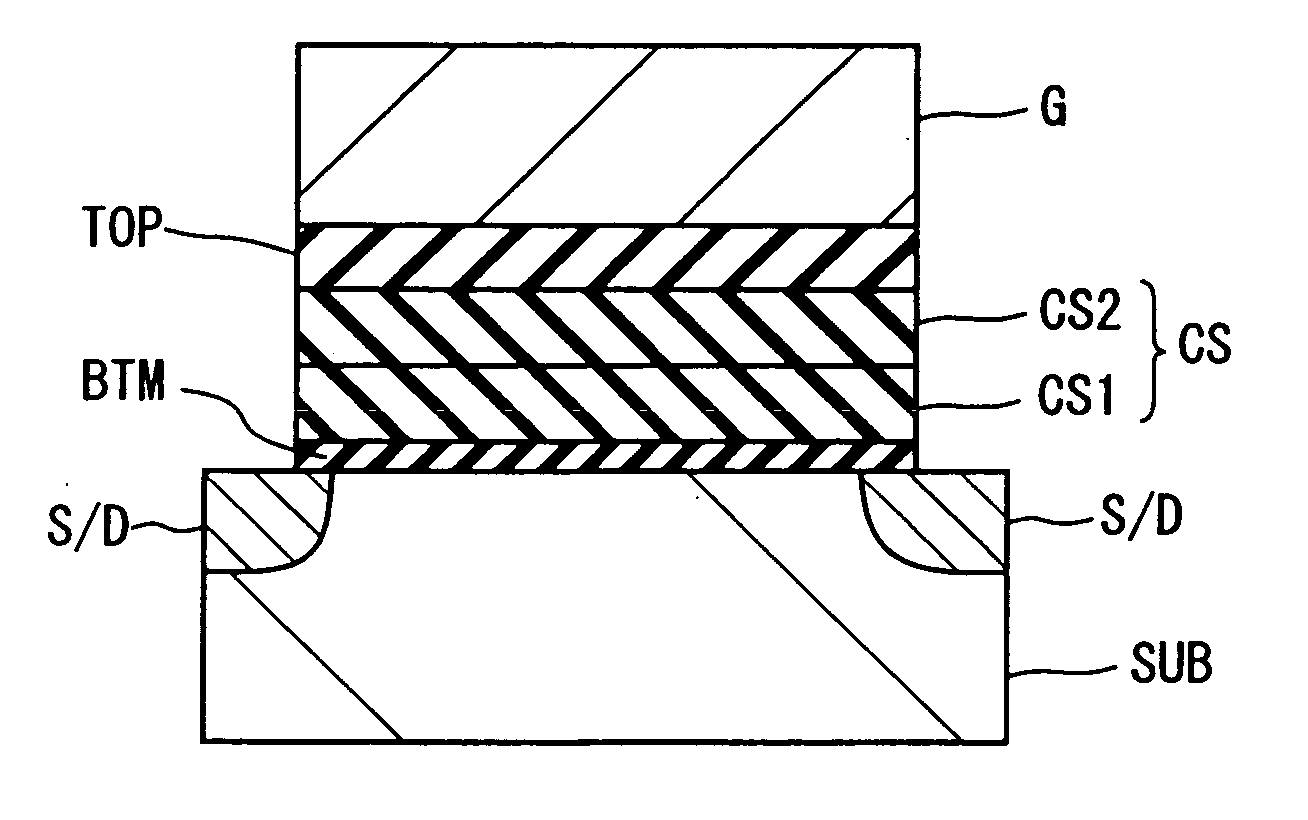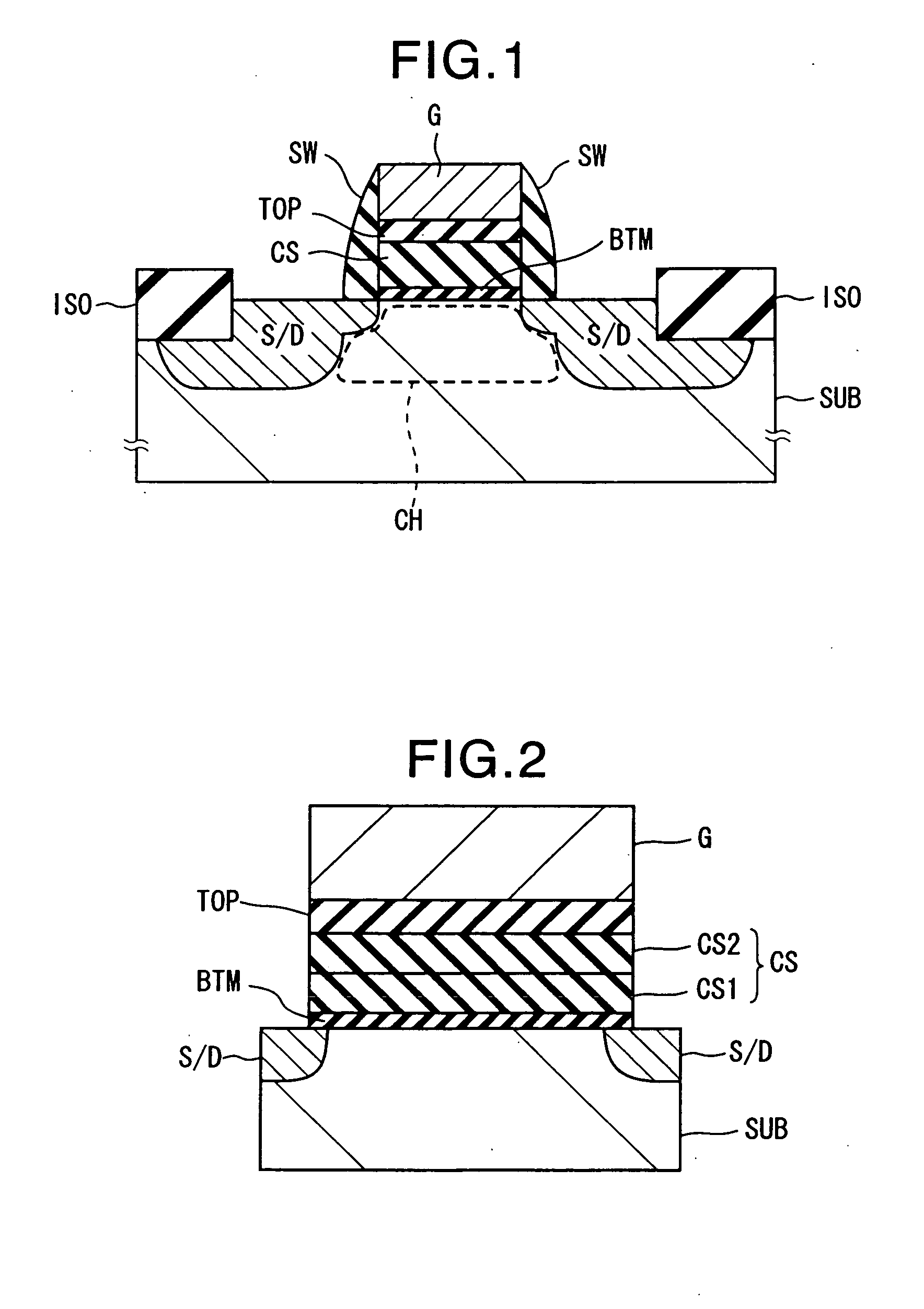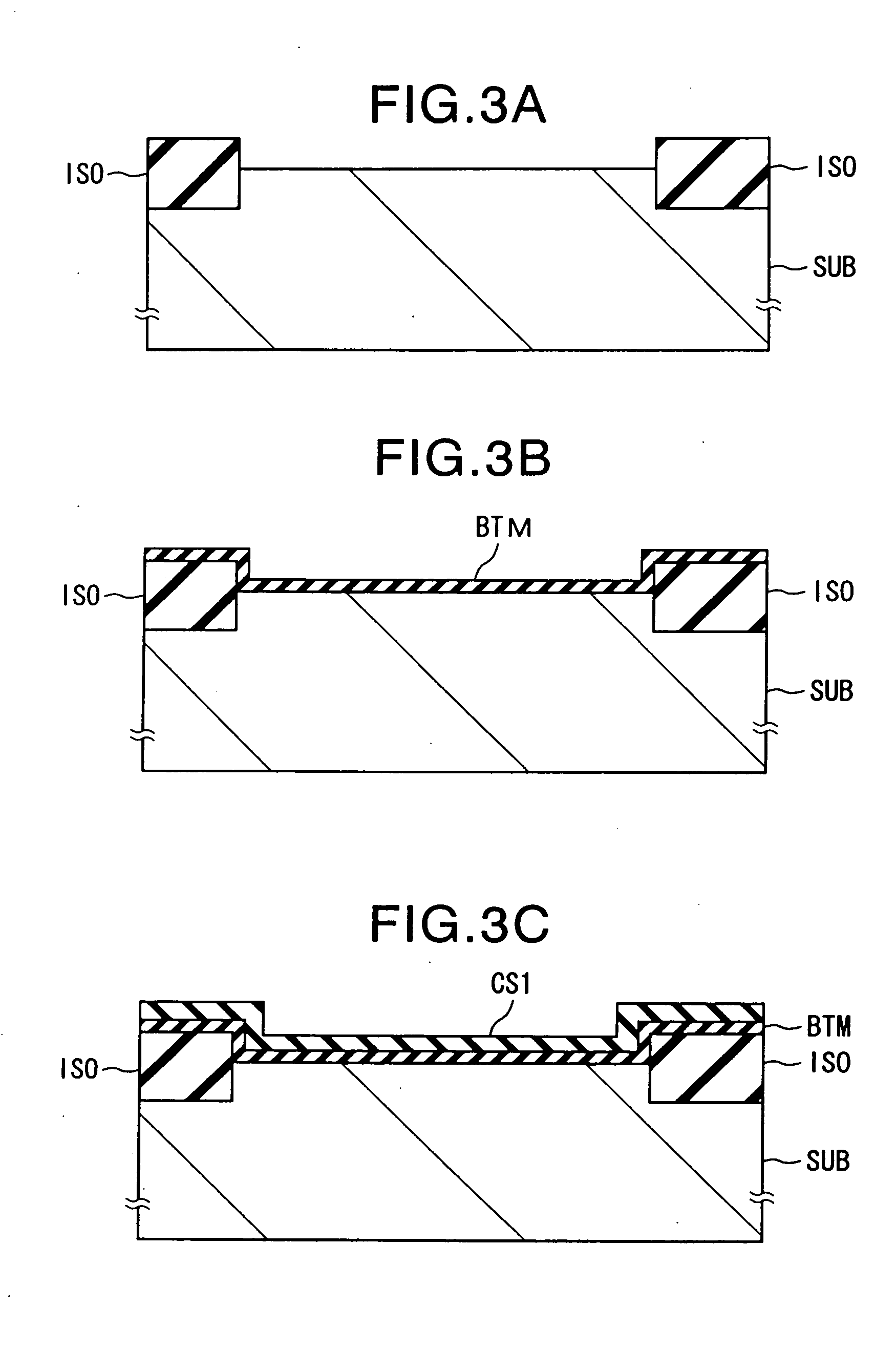Non-volatile semiconductor memory device and method for producing same
a semiconductor memory and non-volatile technology, applied in the direction of semiconductor devices, electrical devices, transistors, etc., can solve the problems of no progress in voltage reduction or speed increase, the thickness of the dielectric film between the active region of the semiconductor and the gate electrode cannot be reduced to 3 nm or less, and the voltage cannot be reduced or increased. , to achieve the effect of improving the charge holding characteristic, reducing the voltage, and increasing the speed
- Summary
- Abstract
- Description
- Claims
- Application Information
AI Technical Summary
Benefits of technology
Problems solved by technology
Method used
Image
Examples
first embodiment
[0030]FIG. 1 shows an example of the sectional structure of the non-volatile memory transistor according to the first embodiment. Further, FIG. 2 is a view showing enlarged a principal part of FIG. 1 showing a detailed example of the structure of the charge storage layer.
[0031] This memory transistor is formed on for example a p-type silicon wafer or other semiconductor substrate, a p-well formed on the surface inside a semiconductor substrate, or a p-type silicon layer of an SOI type substrate isolation structure (hereinafter simply referred to as a “substrate SUB”). Dielectric isolation layers ISO formed by for example LOCOS (local oxidation of silicon) or STI (shallow trench isolation) is formed on the surface of the substrate SUB according to need. The substrate surface portion on which the dielectric isolation layers ISO are not formed becomes the active region on which the element containing the related memory transistor is to be formed.
[0032] On the active region are stacke...
second embodiment
[0096] In the method of producing the memory transistor according to the second embodiment, the same steps are carried out in the same way as the first embodiment up to the formation of the first nitride film CS1 of FIG. 3A to FIG. 3C.
[0097] In the formation of the second nitride film CS2 of FIG. 3D, CVD of silicon nitride is carried out by passing monosilane SiH4 and ammonia NH3 by predetermined flow rates within a range of from 10 sccm to 500 sccm and under a condition that the pressure in the chamber becomes several hundreds of mTorr while holding the substrate temperature the same as that at the time of formation of the first nitride film CS1 or changing it according to need within a range of from 600° C. to 800° C. When the CVD is stopped after the elapse of a predetermined time, a silicon nitride film (second nitride film CS2) of several nm is formed on the first nitride film CS1.
[0098] Thereafter, by a similar method to that of the first embodiment, the various steps of the...
third embodiment
[0099] In the method of producing a memory transistor according to the third embodiment, the same steps are carried out in the same way as the first embodiment up to the formation of the first nitride film CS1 of FIG. 3A to FIG. 3C.
[0100] In the formation of the second nitride film CS2 of FIG. 3D, CVD of silicon nitride is carried out by passing silane trichloride SiHCl3 and ammonia NH3 by predetermined flow rates within a range from 10 sccm to 500 sccm and under a condition that the pressure in the chamber becomes several hundreds of mTorr while holding the substrate temperature the same as that at the time of formation of the first nitride film CS1 or changing it according to need within a range of from 600° C. to 800° C. When the CVD is stopped after the elapse of a predetermined time, a silicon nitride film (second nitride film CS2) of several nm is formed on the first nitride film CS1.
[0101] Thereafter, by a similar method to that of the first embodiment, the various steps of...
PUM
 Login to View More
Login to View More Abstract
Description
Claims
Application Information
 Login to View More
Login to View More - R&D
- Intellectual Property
- Life Sciences
- Materials
- Tech Scout
- Unparalleled Data Quality
- Higher Quality Content
- 60% Fewer Hallucinations
Browse by: Latest US Patents, China's latest patents, Technical Efficacy Thesaurus, Application Domain, Technology Topic, Popular Technical Reports.
© 2025 PatSnap. All rights reserved.Legal|Privacy policy|Modern Slavery Act Transparency Statement|Sitemap|About US| Contact US: help@patsnap.com



